My single line text
My single line text
My single line text

"SAHAR"
ARTSHOPPING 2018 Salon International d'Art Contemporain
Paris, Carrousel du Louvre October 19th-21st 2018
Andrea Fallini

SAHAR (سحر) is an Arabic term also used today as feminine given name, that can be translated as "dawn" even if, in reality, its precise meaning would be that of "just before dawn". Particularly, in the Jewish tradition, "it denotes the precise moment of passage from darkness to light and of both it brings the message".
Unlike the Italian meaning in which the term "dawn" it evokes the idea of the incipient light, in the Jewish tradition the term contains the concept of obscurity since "there is not a darker hour than that next to the dawn". The Jewish meaning "sets therefore the accent on the wait for the light, that is on the moment that precedes its manifestation. Sahar is the promise of the end of the night that is usually announced by the song of the birds that, still dark, foresee the arrival of the day."*
And it is certainly the symbolic implication of this moment of passage (night-day) that has pushed BZanconato to adopt it as the title of the show (and the title of a work) she presents in Paris, at the Carrousel du Louvre, during the fall edition of ArtShopping 2018. In this decision of the artist there is the reflex of her recent personal events that have seen her beside her father in his last months of life. And Sahar is the perfect synthesis of a reflection on the life that BZanconato has developed in the path beside her father and that now is proposed in the show at the Carrousel du Louvre.
Moreover, it is to note the implicit dualism in the symbolic meaning of Sahar, that is, at the same time, night and day, darkest moment and wait for light.
And it is certainly the symbolic implication of this moment of passage (night-day) that has pushed BZanconato to adopt it as the title of the show (and the title of a work) she presents in Paris, at the Carrousel du Louvre, during the fall edition of ArtShopping 2018. In this decision of the artist there is the reflex of her recent personal events that have seen her beside her father in his last months of life. And Sahar is the perfect synthesis of a reflection on the life that BZanconato has developed in the path beside her father and that now is proposed in the show at the Carrousel du Louvre.
Moreover, it is to note the implicit dualism in the symbolic meaning of Sahar, that is, at the same time, night and day, darkest moment and wait for light.
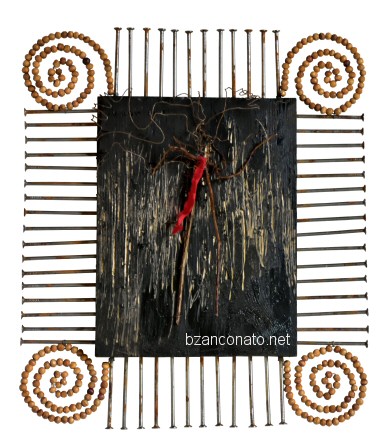
This dualism pervades, at different levels, the subjets proposed by the works in show, that, facing the theme of the death (unsolved taboo also for our contemporary society), throw a vivid light on life. This dynamic relationship among contrasted elements can be perceived at a first glance on the environment of the show that introduces, on the one side, a lectern that holds up an artist’s book ("SPLEEN FLOWERS") and, on the center, situated on a base that lifts it from earth, a boat on which a figure that smokes a cigar sits. The boat, ancient symbol, immediately makes the idea of the passage, to go beyond (in the antiquity many people, beginning from the ancient Egyptians, have adopted a ritual boat for their funeral rites; in the Greek-Roman world Charon ferried the souls of the deads in the Hades transporting her across the Acheron river; in the northern populations it was in use to cremate the corpses in funeral boats).
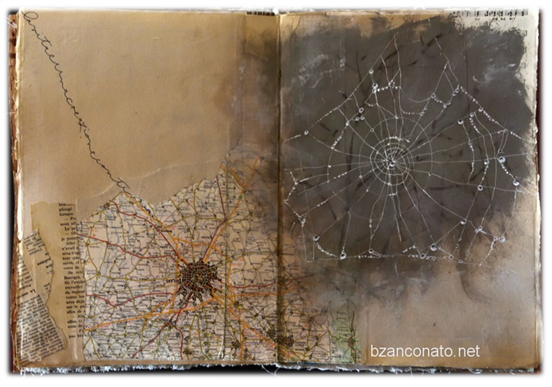
If, on the one hand, the boat is a representation of the death (and the figure with the head constituted by a skull seems to confirm it), on the other hand, the open book on the lectern, with its different and beautiful pages, is the symbol of the life. Inside, we can read, among the others, "life is a continuous creation."
In this reference game in which the artist articulates the exhibition, the work beside the lectern "AND DID YOU GET WHAT YOU WANTED EVEN SO?" introduces us a sort of quadrant of odometer that, however, rather than represent the number of crossed miles withdraws a countdown (in fact the figure 5 follows to the figure 6, which is almost out of sight). To notice the appearence of the surfaces, vintage, with ample areas invaded by a layer of rust, to give the sense of the past, of the time spent.
In this reference game in which the artist articulates the exhibition, the work beside the lectern "AND DID YOU GET WHAT YOU WANTED EVEN SO?" introduces us a sort of quadrant of odometer that, however, rather than represent the number of crossed miles withdraws a countdown (in fact the figure 5 follows to the figure 6, which is almost out of sight). To notice the appearence of the surfaces, vintage, with ample areas invaded by a layer of rust, to give the sense of the past, of the time spent.
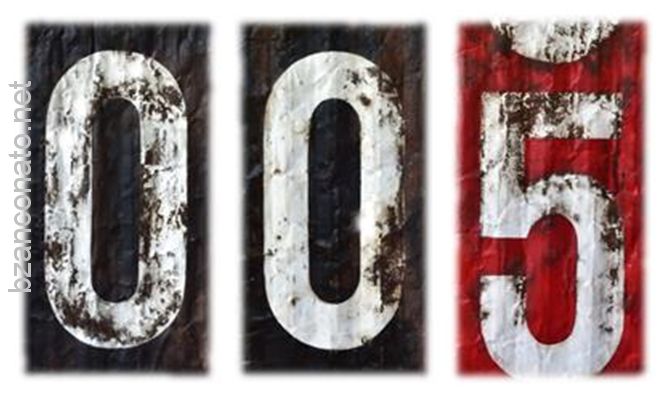
It is the picture of the moment in which the time is about to expire and is time to draw conclusions: for this the matter set by the title not only becomes pertinent but urgent.
And here, at different levels, the dualism mentioned above emerges: at a first level, the approach of the death throws a light on the spent life. Who finds him in this condition often feels the need to set order in his own memories, to look for a sense to the so many moments of his own life, to find a sort of logical thread that joins the various legs of his own existence. To another level, may-be more general, the presence of death as constitutive and ineludibile element of life, makes unique and precious every moment: if we remembered us that, however, death is behind the angle and can also catch us in the most unexpected moments, perhaps, also beginning from youth, our attitude toward life and its daily implications would be more aware, even different.
On the contrary, our mentality has the tendency to hide the existence of death, or eventually to segregate it in moments in which the rites and the conventions hide its true message: that is life. Matter of fact, most of funeral rites rather than celebrate the deceased, his actions, his memory, his heritage, have the tendency to propose the human nothingness in front of the death and of the divine sketches, keeping on spreading its fear. Taboo. Instead, a person's disappearance, beyond the pain that every loss involves, it becomes an occasion to remember that life is a precarious gift, that the person, with his life, with his works and his actions, has left us a message, an example, an inheritance.
But the question which the work puts also sends back to the project, if we want to see it that way, of our life: estimate if we obtained what we wanted imply, inevitably, to have fixed at least an objective to catch towards which adress our actions. And that's the point: the definition of the goal of life which can satisfy our deepest aspirations by fulfilling our particular capacities, our talents. As says the sentence in the book: make of our life a "continuous creation".
And here, at different levels, the dualism mentioned above emerges: at a first level, the approach of the death throws a light on the spent life. Who finds him in this condition often feels the need to set order in his own memories, to look for a sense to the so many moments of his own life, to find a sort of logical thread that joins the various legs of his own existence. To another level, may-be more general, the presence of death as constitutive and ineludibile element of life, makes unique and precious every moment: if we remembered us that, however, death is behind the angle and can also catch us in the most unexpected moments, perhaps, also beginning from youth, our attitude toward life and its daily implications would be more aware, even different.
On the contrary, our mentality has the tendency to hide the existence of death, or eventually to segregate it in moments in which the rites and the conventions hide its true message: that is life. Matter of fact, most of funeral rites rather than celebrate the deceased, his actions, his memory, his heritage, have the tendency to propose the human nothingness in front of the death and of the divine sketches, keeping on spreading its fear. Taboo. Instead, a person's disappearance, beyond the pain that every loss involves, it becomes an occasion to remember that life is a precarious gift, that the person, with his life, with his works and his actions, has left us a message, an example, an inheritance.
But the question which the work puts also sends back to the project, if we want to see it that way, of our life: estimate if we obtained what we wanted imply, inevitably, to have fixed at least an objective to catch towards which adress our actions. And that's the point: the definition of the goal of life which can satisfy our deepest aspirations by fulfilling our particular capacities, our talents. As says the sentence in the book: make of our life a "continuous creation".
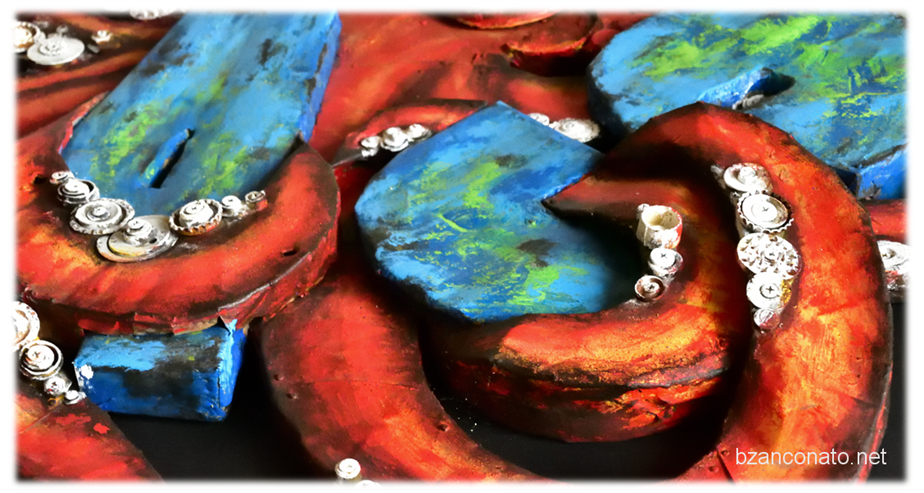
Unfortunately, the identification and the development of the talents of eachone are not at the heart of the mentality and of the education: on the contrary, the standardisation and the planning of the behavior are the true and thinly disguised objectives of the contemporary society, in which the fact of staying in line with the trends, not only stylistic or technological, already becomes an objective of life. And it doesn’t matter if, in all this, the deep individual aspirations are ignored, if not crushed by the crunch formed, on the one side, by the advertising and, on the other one, by the necessity to appear towards the social group.
And this vicious circle, this unreleased road is the subject of “BIAS”, one of the works presented in the central wall of the exhibition. From the psychological point of view, bias are those errors of assessment deriving from a complex series of factors that we can somehow summarize as the result of an uncritical and non-logical assumption of profound inputs and conditionings coming from the family, the society, the education, from some personal previous experiences,... but which are not in line with our own nature and which still condition and direct the behavior in an inconsistent way. The problem is that it is quite difficult to notice and then get rid of these unconscious distortive elements that, over the time, become more and more behavioral blocks and prevent the personal development.
And this vicious circle, this unreleased road is the subject of “BIAS”, one of the works presented in the central wall of the exhibition. From the psychological point of view, bias are those errors of assessment deriving from a complex series of factors that we can somehow summarize as the result of an uncritical and non-logical assumption of profound inputs and conditionings coming from the family, the society, the education, from some personal previous experiences,... but which are not in line with our own nature and which still condition and direct the behavior in an inconsistent way. The problem is that it is quite difficult to notice and then get rid of these unconscious distortive elements that, over the time, become more and more behavioral blocks and prevent the personal development.
Moreover, contemporary life sees us always running, driven by a current in which we are all immersed and that we must take the speed and indulge the direction. “THE SPEED OF LIFE” is the work that tackles this aspect: the speed today has become a value and this speed is measured continually making of the relative measuring instruments an indispensable extension of the person. Everything has to be quickly executed and seen; everything has to be quickly addressed and decided; everyone must live not at 200 per hour (no longer enough) but at 500 per hour, as the representation of the work indicates. Speed that then means totalizing work, race to money and self-affirmation (only ever economic affirmation), given that the value of people is measured by the extent of their bank account. But what do you grasp at that speed? Does each of us really want to go through his life at that frantic pace?
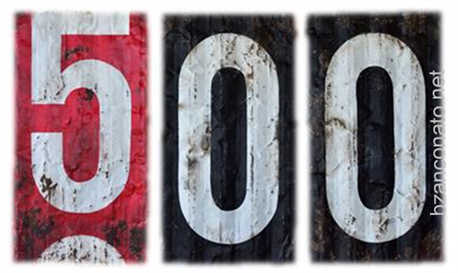
BZanconato presents with “The Speed of Life” the concept of use of time (and therefore of path of life) that, in the light of what has been said, is counted and therefore precious. Its use becomes expression of individual planning. And, as for all projects, also for the human one a phase of study and preliminary analysis is required before embarking on the actual development phase, in order to evaluate the various possibilities, to better address the choices, to focus the strengths and the weakness.
And this usually requires not only time but a reflection, an analysis, precisely, of a purely individual nature that leads then to make conscious choices that take into account our personal predispositions and our deepest aspirations. Moreover, these choices often occur in a moment of life, youth, in which many have not been fortunate to know yet their own predispositions and deep aspirations and, at the same time, are attracted by collective myths proposed by the consumer society. So, often, the rapid whirl in which we are, more or less consciously, immersed quickly drags towards directions that have not even been imagined, surrounded by a comfortable conformism that reduces the questions to be asked and the decisions to be taken. But is this the life we really want or we wanted? Is this what we really desired?
And this usually requires not only time but a reflection, an analysis, precisely, of a purely individual nature that leads then to make conscious choices that take into account our personal predispositions and our deepest aspirations. Moreover, these choices often occur in a moment of life, youth, in which many have not been fortunate to know yet their own predispositions and deep aspirations and, at the same time, are attracted by collective myths proposed by the consumer society. So, often, the rapid whirl in which we are, more or less consciously, immersed quickly drags towards directions that have not even been imagined, surrounded by a comfortable conformism that reduces the questions to be asked and the decisions to be taken. But is this the life we really want or we wanted? Is this what we really desired?

Not always. Over time we realize that we have married values in which we actually had not even reflected and lived according to canons of others. But in the long run the character, the deep nature, in some way emerges. It makes its way little by little, slowly. Sometimes it is enough to have seemingly insignificant facts to unleash a cataclysm. Or painful facts bring to light the reality of things. From the beginning only the surface is scratched: only small scratches but that in time constitute a letter. Then a word and finally a scream: like that of another work on display, “GRITA” (scream in spanish).
The Maya’s veil is broken and we see the barriers that surround us and the chains that in some way have kept us tied up. And this still refers to the sentence of the book that says: "Life is a continuous creation". And creation consists in the development of the uniqueness of each one, precious as it is not repeatable.
From this point of view, the sign that we find in the work (Grita), a graffiti in the pure sense of the term, engraved by force in the wall of the urban prison in which many feel to live, depersonalizing and deprived of human warmth, appears a gesture of defiance but, in reality, represents the rediscovery and affirmation of an individuality that has difficulty in recognizing itself in contemporary collective rituals, in the race to consumption (and to waste), in the purely economic vision of things, forgetting the human component that gives a completely different contour to everything.
And the scream, in some respects, is an expression of the regret that some feel because that they have heard and listened belatedly this deep voice, when the road traveled in a direction not them (at the contemporary speed) is so much. And that is why the light thrown by the thought of death on life becomes precious, reminding us that this is our chance.
So we return to the starting point: death no more to be seen with that macabre aura and to hide from our sight, but, on the contrary, to keep in mind in everyday life and thoughts as a compass to direct our actions , like a sieve to discriminate what belongs to us from what is foreign. Moreover, the thought of death introduces the idea of the relic that we will leave after us, to our children, to the world that comes. And what memory do we want to leave of us? And also in this case another page of the book, a real key to reading the whole exhibition, presents the vision of the artist through a quotation by Ezra Pound:
The Maya’s veil is broken and we see the barriers that surround us and the chains that in some way have kept us tied up. And this still refers to the sentence of the book that says: "Life is a continuous creation". And creation consists in the development of the uniqueness of each one, precious as it is not repeatable.
From this point of view, the sign that we find in the work (Grita), a graffiti in the pure sense of the term, engraved by force in the wall of the urban prison in which many feel to live, depersonalizing and deprived of human warmth, appears a gesture of defiance but, in reality, represents the rediscovery and affirmation of an individuality that has difficulty in recognizing itself in contemporary collective rituals, in the race to consumption (and to waste), in the purely economic vision of things, forgetting the human component that gives a completely different contour to everything.
And the scream, in some respects, is an expression of the regret that some feel because that they have heard and listened belatedly this deep voice, when the road traveled in a direction not them (at the contemporary speed) is so much. And that is why the light thrown by the thought of death on life becomes precious, reminding us that this is our chance.
So we return to the starting point: death no more to be seen with that macabre aura and to hide from our sight, but, on the contrary, to keep in mind in everyday life and thoughts as a compass to direct our actions , like a sieve to discriminate what belongs to us from what is foreign. Moreover, the thought of death introduces the idea of the relic that we will leave after us, to our children, to the world that comes. And what memory do we want to leave of us? And also in this case another page of the book, a real key to reading the whole exhibition, presents the vision of the artist through a quotation by Ezra Pound:
“What thou lovest well remains,
the rest is dross
What thou lov’st well
shall not be reft from thee
What thou lov’st well
is thy true heritage”
the rest is dross
What thou lov’st well
shall not be reft from thee
What thou lov’st well
is thy true heritage”
According to BZanconato, what truly represents us, the legacy that each of us leaves, is made up of what we are loved, from what has been the object of our passion. And the explaination for this is written on another page of the same book:
"whenever we try to be better than we are, even everything around us becomes better: this is where the power of love enters because when we love we want to be better than we are "
The thought of death, therefore, becomes a valuable stimulus to develop our possibilities to the fullest, to live intensely and consciously every moment of our lives.
This appears the suggestion that BZanconato launches with the other work on display in the central wall: "WHOSE WORLD IS IT?", a kind of colorful mask of death, that keeps the dark colors (the pain of the disappearance certainly remains, but this is also a component of life) but that combines other vivid and less disturbing: death is a kind of friend which accompanies us throughout our live and that can help us to make a deeper sense of our existence.
And this refers to the strange figure that sits on the boat, a skull with body and human features that is smoking a cigar and that, in the symbolism of the artist, accompanies the man and his soul even in the last passage through the Acheron. But, as mentioned, also about "Whose the world Is it?", this is not a disturbing figure but rather ironic if not friendly: actually it has always been at our side, a friend who has spurted on us and spurs on us to bring out the best of ourselves.
To summarize, Sahar represents for BZanconato the opportunity to face the delicate theme of the meaning of life. And she do it taking inspiration by her personal vicissitudes (the disappearance of her father) to share her experiences and reflections, to point out that, after all, death reminds us that life is a gift which is a shame to waste.
This appears the suggestion that BZanconato launches with the other work on display in the central wall: "WHOSE WORLD IS IT?", a kind of colorful mask of death, that keeps the dark colors (the pain of the disappearance certainly remains, but this is also a component of life) but that combines other vivid and less disturbing: death is a kind of friend which accompanies us throughout our live and that can help us to make a deeper sense of our existence.
And this refers to the strange figure that sits on the boat, a skull with body and human features that is smoking a cigar and that, in the symbolism of the artist, accompanies the man and his soul even in the last passage through the Acheron. But, as mentioned, also about "Whose the world Is it?", this is not a disturbing figure but rather ironic if not friendly: actually it has always been at our side, a friend who has spurted on us and spurs on us to bring out the best of ourselves.
To summarize, Sahar represents for BZanconato the opportunity to face the delicate theme of the meaning of life. And she do it taking inspiration by her personal vicissitudes (the disappearance of her father) to share her experiences and reflections, to point out that, after all, death reminds us that life is a gift which is a shame to waste.
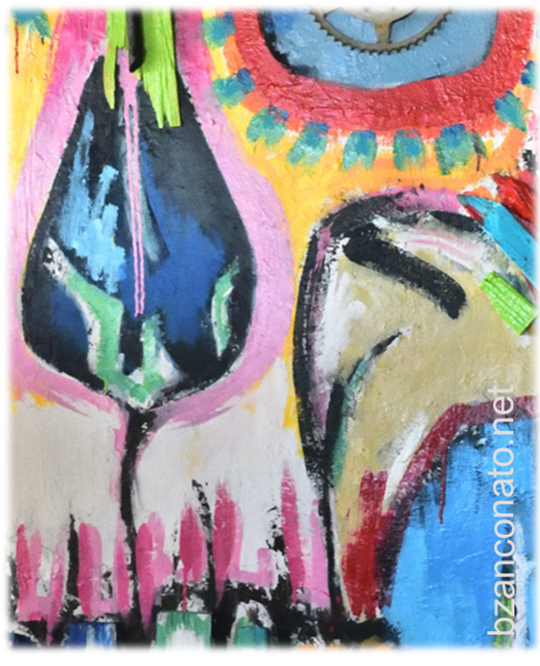
That life is also our chance to leave a lasting trace of our passage and that this trace is made up of the passion and love of which we coat the things and the people around us.
And so that, at the end, to quote the poem "Late Fragment" by Raymond Carver that we can find in another of the pages of the book "Spleen Flowers" on display, you can answer that yes, you got what you wanted from life, despite everything:
And so that, at the end, to quote the poem "Late Fragment" by Raymond Carver that we can find in another of the pages of the book "Spleen Flowers" on display, you can answer that yes, you got what you wanted from life, despite everything:
"And did you get what
you wanted from your life even so?
I did.
And what did you want?
To call myself beloved
To feel myself beloved on the earth.”
you wanted from your life even so?
I did.
And what did you want?
To call myself beloved
To feel myself beloved on the earth.”
*( G.Busi “Simboli del pensiero ebraico. Lessico ragionato in settanta voci” Einaudi)